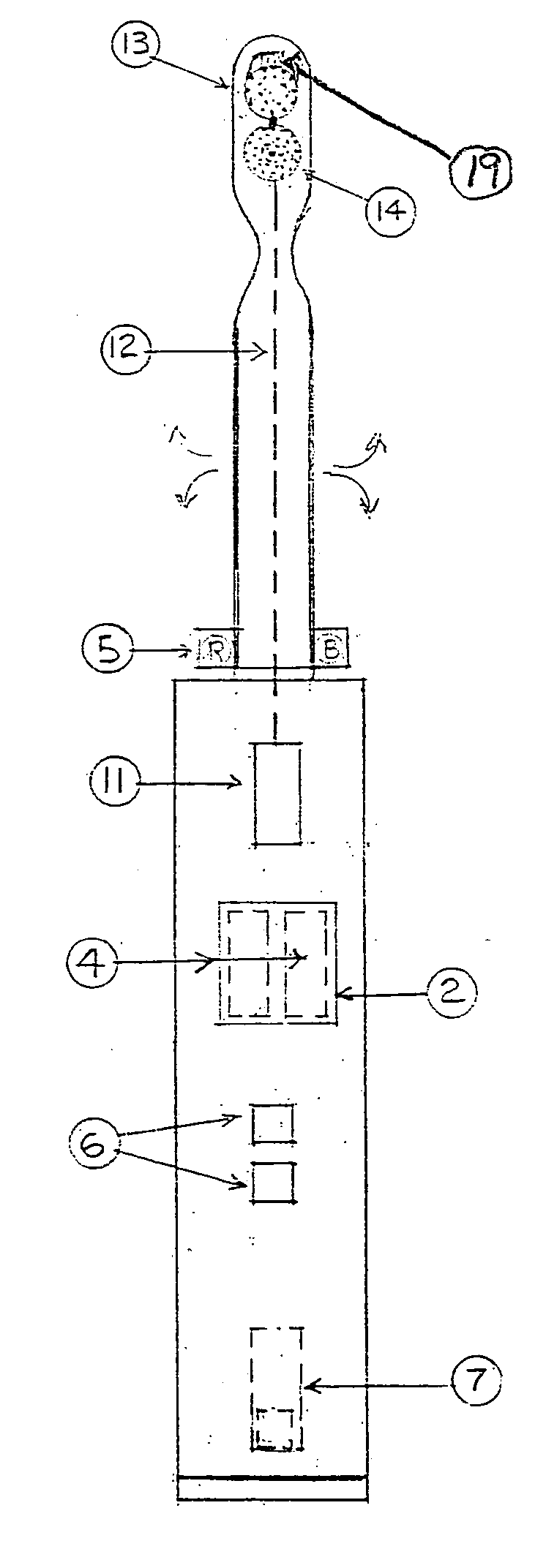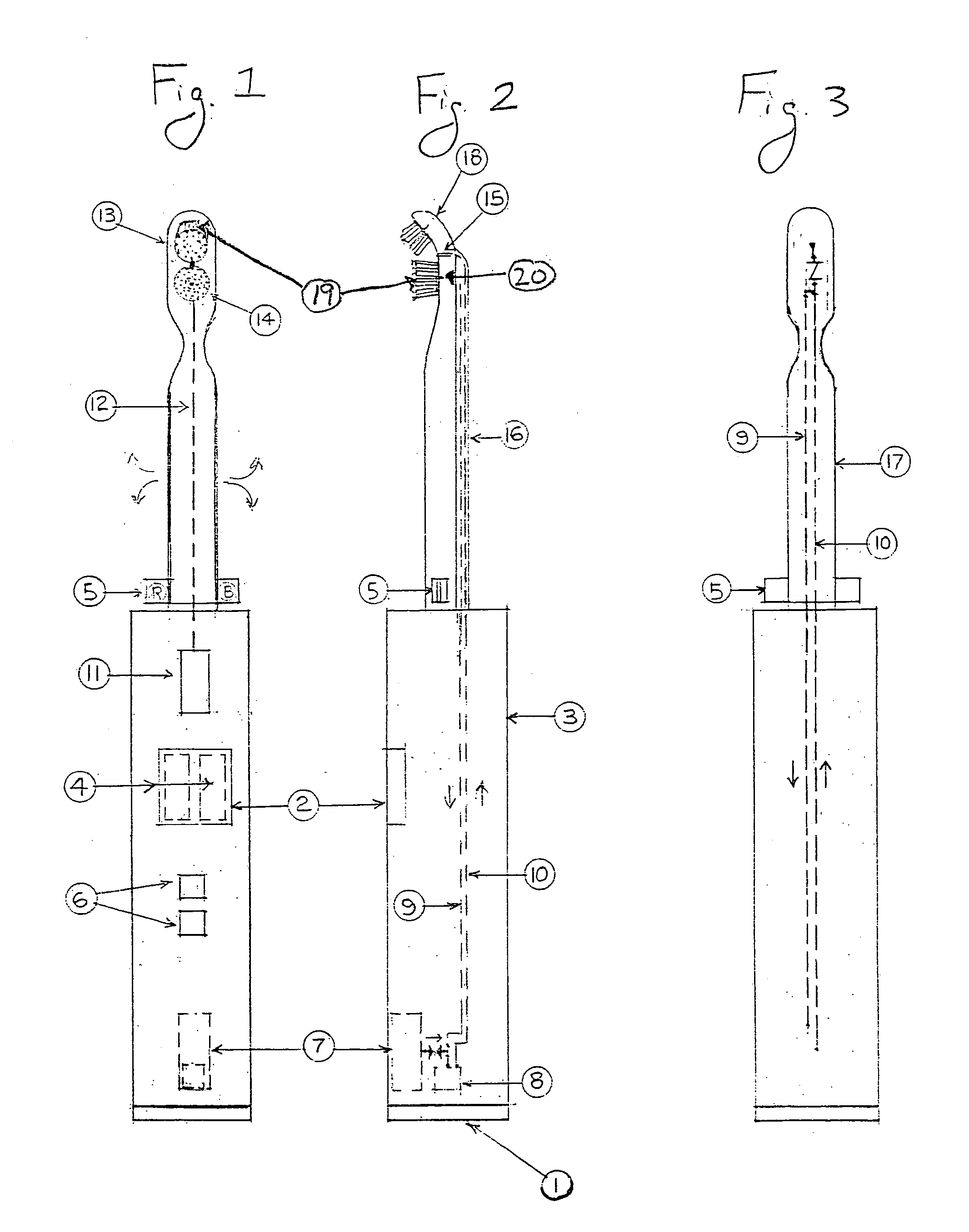Toothbrush for prevention treatment of tooth sensitivity and method therefor
a tooth brush and tooth sensitivity technology, applied in the field of tooth brushes, can solve the problems of excessive wear of enamel and/or cementum, dentin to become exposed, and tooth sensitivity
- Summary
- Abstract
- Description
- Claims
- Application Information
AI Technical Summary
Benefits of technology
Problems solved by technology
Method used
Image
Examples
Embodiment Construction
[0047] Referring now to the drawings, wherein like reference numerals designate the corresponding structure, part, or element, as the case may be, throughout the views, a toothbrush constructed in accordance with the preferred embodiment of the present invention comprises a main cylinder 3, a tube 17 having a head 18, an upper bristle group 13, a lower bristle group 14, wherein each of the upper bristle group and the lower bristle group has shorter bristles 19 in the periphery all around, and a replaceable bristle base 20; wherein said tube comprises a drive shaft 12 for rotating said lower and upper bristles, and said main cylinder further comprises an electric motor 11, an access cover 1 for the insertion of a desensitizing agent cartridge 7, a battery housing 4, having an access cover 2, a miniature pump 8, operational buttons for turning toothbrush on and off and for desensitizing agent application 6, return piping for desensitizing agent 9, dispensing piping for desensitizing a...
PUM
 Login to View More
Login to View More Abstract
Description
Claims
Application Information
 Login to View More
Login to View More - R&D
- Intellectual Property
- Life Sciences
- Materials
- Tech Scout
- Unparalleled Data Quality
- Higher Quality Content
- 60% Fewer Hallucinations
Browse by: Latest US Patents, China's latest patents, Technical Efficacy Thesaurus, Application Domain, Technology Topic, Popular Technical Reports.
© 2025 PatSnap. All rights reserved.Legal|Privacy policy|Modern Slavery Act Transparency Statement|Sitemap|About US| Contact US: help@patsnap.com


